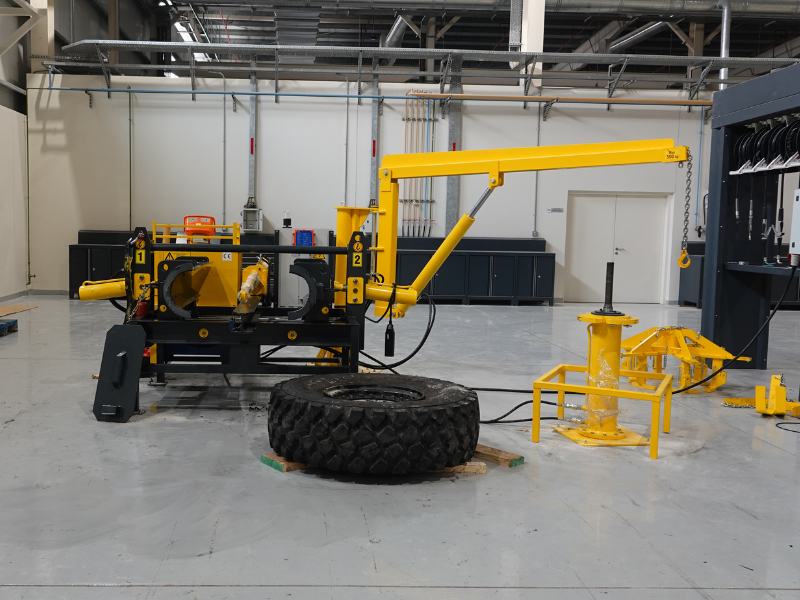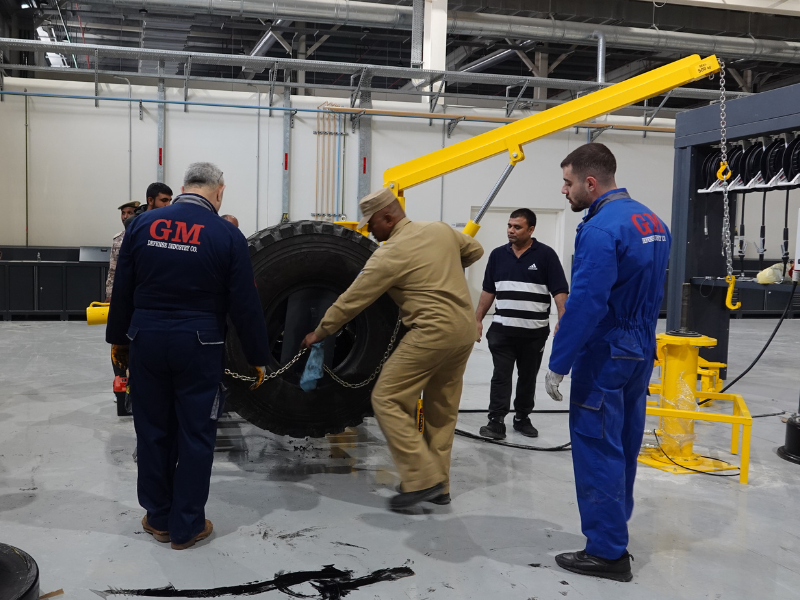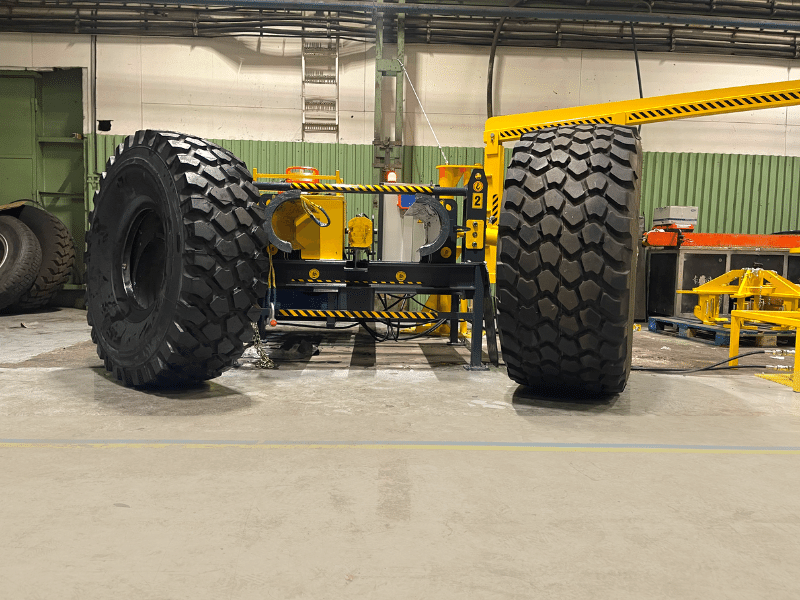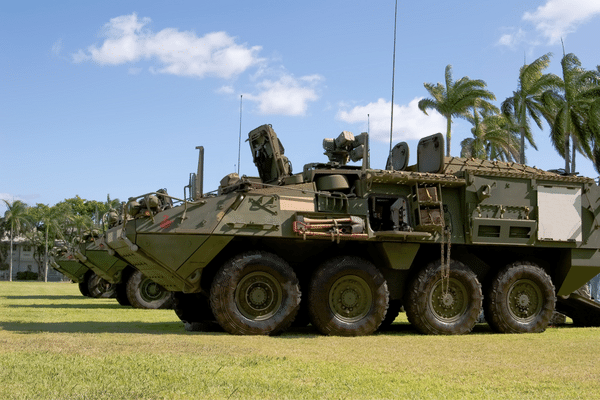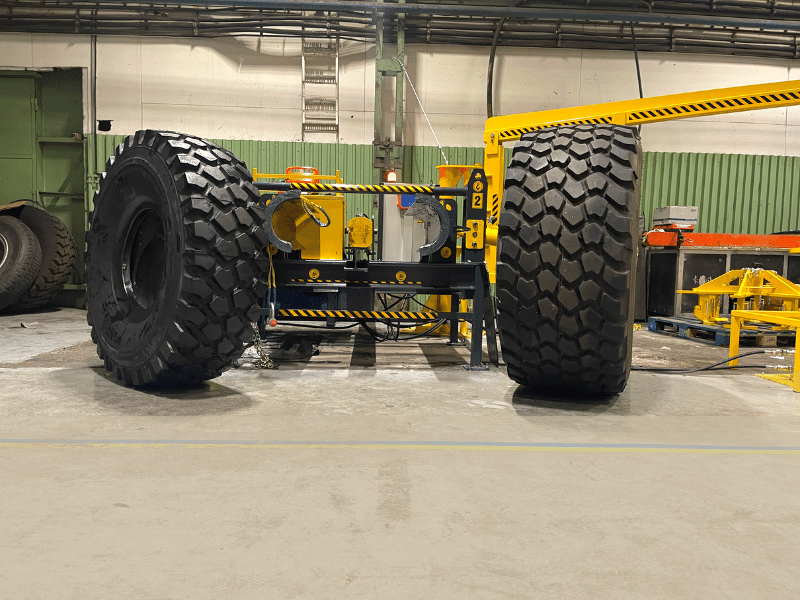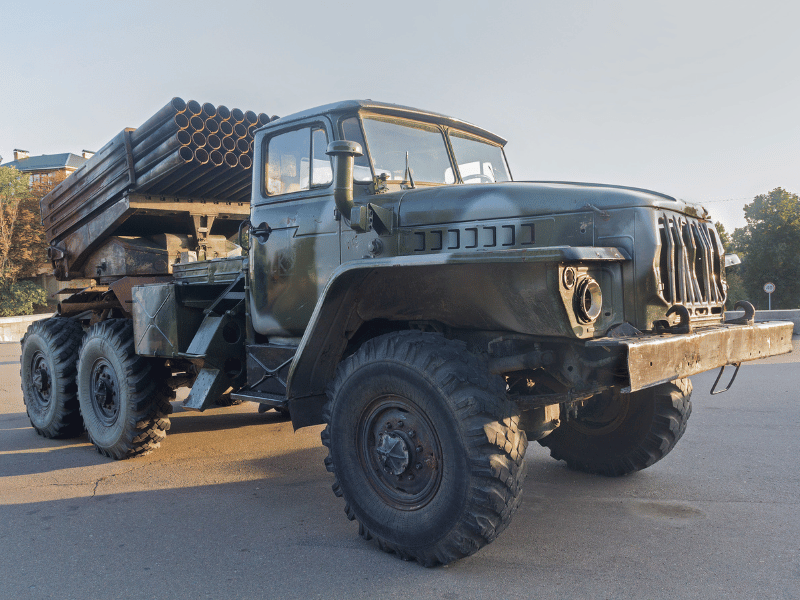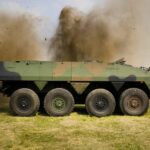The United States military and other nations have used military vehicles since the early days of World War I, but their use and importance have grown tremendously in recent years. Military vehicles are generally designed to be bulletproof, with run-flat and thick metal skins or plates covering the engine, and other vital parts. This protects the people inside while protecting sensitive or essential components from damage.
Military vehicles are used in various roles and situations, many of which are unexpected for a tank. They’re essentially mobile fortresses that allow operators to drive through dangerous areas without fear of being shot or blown up. Let’s take a closer look at the history of military vehicles and why they continue to be so important today.
The History of Military Vehicles
F.R Simms designed the first military vehicle in 1899. Known as the Vickers armor, a four-cylinder, 16-horsepower Daimler engine powered the 6 mm thickly armored car. The turtle-shaped vehicle had a maximum speed of 14 km per hour and was protected by cannons on all sides.
The Vickers armor was primarily designed to protect from any violent activity. It should be noted that the Vickers armor was created by adding armor and real weapons to already existing military vehicles.
Furthermore, the Belgian Army achieved the first successful use of military vehicles in combat in 1904, called the Minerva Military vehicles. The development of military vehicle has progressed extensively in the last century.
Military vehicles had become essential to military operations by the time Rolls-Royce Ghosts were armored in World War I. Today, they are being developed with run-flat systems to ensure military success in complex and hostile environments.
What makes Military Vehicles so Important?
Military vehicles are extremely important in modern combat operations, even though they aren’t the primary fighting military vehicles. In nearly every major war or conflict in the past century, military vehicles have played a significant role in protecting troops and helping them advance toward their objectives. They also help in evacuation efforts, allowing soldiers to quickly get to and from the battlefield without fear of being shot or blown up.
Since they don’t rely on foot soldiers, air support, or artillery, military vehicles are critical during offensive operations. They allow military personnel to outmaneuver the enemy while also helping to protect them from the enemy’s weapons. In addition, their ability to move across rugged terrain and get to dangerous areas for other vehicles makes military vehicles essential in support roles.
Run-Flat Tires for Military Vehicles
Though they first appeared in the mid-1980s, run-flat systems are now more popular than ever. Some manufacturers like GM Defensive are making them standard in new military vehicles, with more consumers asking about run-flats, their advantages, and how using them impacts driving.
Run-flat tires will allow continued operation even after losing some or all inflation pressure for up to 50 miles at a max speed of up to 80 kilometers. In addition, they give operators absolute control over the car when they are completely deflated.
GM Defensive Run-Flat Changer Machine Models for Military Vehicles
Run-flat tires cannot be repaired because they lose structure and integrity when driven without air pressure. However, there is a possibility to reuse tires repeatedly with a run-flat changing machine designed by GM Defensive.
The run-flat changing device helps cut costs by reusing tires and ensuring the cars are safe during military operations. GM Defensive changer machines are available in standard or workshop, container, or trailer models.
GM Defensive Run-Flat Changer Machine Workshop Model: The GM standard run-flat tire changer machine is ideal for the quick removal and replacement of punctured or damaged armored tires in military operation zones.
This model is suitable for military bases that do not need to relocate or transport a tire-changing machine to a different location.
GM Defensive Run-Flat Changer Machine Container Model: The preferable model is the container model, which allows military personnel to operate the device out of military bases or workshop areas.
GM Defensive Run-Flat Changer Machine Trailer Model: The trailer model is more efficient for land forces that drive more large-scale operation areas far from the operation base.
Bottom Line
Military vehicles are significant in modern combat operations and are critical during offensive operations. In addition, their run-flat ability to get to areas that are dangerous for other cars makes them essential in support roles.
